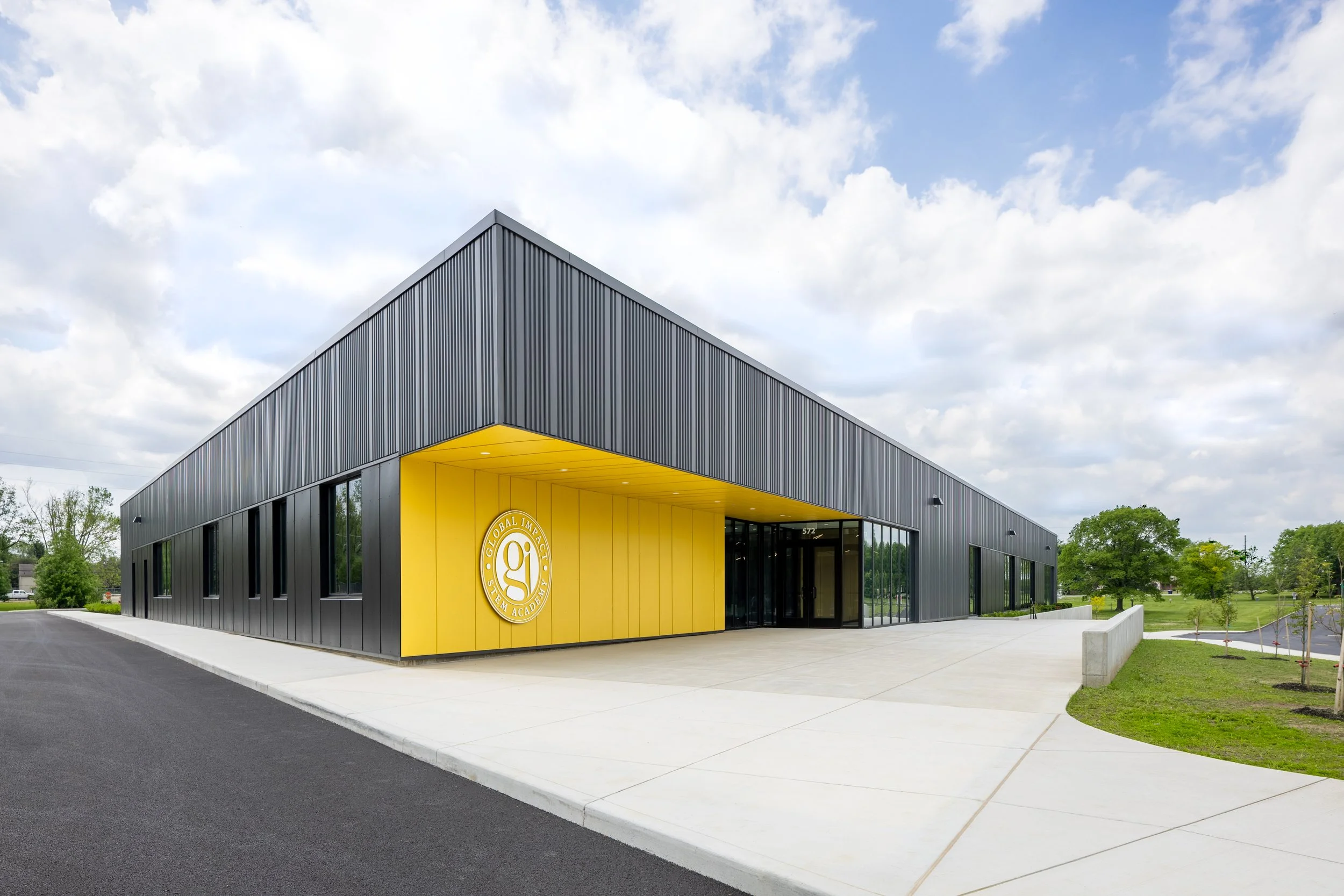GLOBAL IMPACT STEM ACADEMY
Global Impact STEM Academy outgrew its original facility. The high school's innovative agriculturally-based STEM curriculum required flexible, technology-rich spaces supporting hands-on, project-based learning that traditional classroom designs couldn't accommodate.
-
Through extensive community engagement, the design team developed a facility physically embodying GISA's student-directed learning philosophy. Rather than fixed classrooms designed for lecture-based instruction, the building features adaptable learning zones quickly reconfigurable as project needs evolve.
The design incorporates portable technology, movable furniture, and modular infrastructure adapting to evolving curriculum needs. Specialized learning environments including Future Farmers of America lab and dedicated greenhouse support GISA's unique agriculturally-based program while creating authentic learning experiences connecting theory with practice.
Strategic location on Clark State College campus creates natural opportunities for high school students to engage with higher education. Visual connections between different learning activities allow students to observe and be inspired by peers' work.
The new Upper Academy significantly expanded GISA's capacity while enabling faculty to implement project-based learning approaches previously constrained by traditional classroom configurations. Students now experience learning environments more closely resembling real-world work settings, developing collaboration, communication, and problem-solving abilities essential for future careers.
-
Springfield, OH
-
2024
-
Learn






